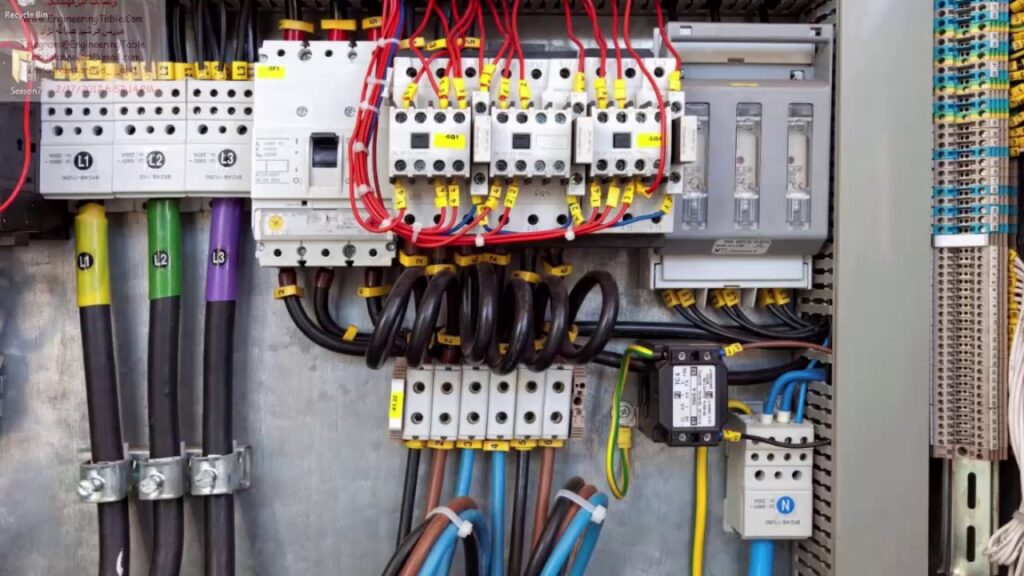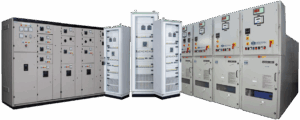The central component of your home’s electrical system is an electrical panel, sometimes referred to as a distribution board or breaker box. It guarantees that power is distributed to your home’s circuits in a safe manner. But as electrical demands rise and technology develops, older panels may not be able to keep up, which could lead to dangers like fires, overheating, or power outages.
The significance of electrical panel upgrades, the advantages of contemporary systems, the procedure, and answers to commonly asked questions will all be covered in this guide.
Why Consider an Electrical Panel Upgrade?
- Increased Power Demands
- Modern homes rely on more electrical appliances and devices than ever before, from high-tech kitchen gadgets to smart home systems. Older panels designed for lower capacities often can’t handle the load.
- Safety Concerns
- Outdated panels or those with faulty wiring can overheat, trip breakers frequently, or even lead to electrical fires. Upgrading ensures the safety of your home and family.
- Home Renovations or Additions
- If you’re adding new rooms, installing a home office, or upgrading appliances, you’ll need a panel that can accommodate the increased electrical load.
- Compliance with Electrical Codes
- Electrical codes are updated regularly to ensure safety. An older panel might not meet current standards, especially if it uses outdated technology like fuse boxes.
- Improved Efficiency
- Upgraded panels distribute electricity more effectively, minimizing energy waste and enhancing system performance.
Signs You Need an Electrical Panel Upgrade
- Frequent breaker trips: Constantly resetting breakers is a sign your panel is overworked.
- Burning smell or scorch marks: These are indicators of overheating wires or circuits.
- Flickering or dimming lights: If your lights dim when appliances are used, it’s time for an upgrade.
- Insufficient outlets: Overuse of power strips and extension cords indicates inadequate panel capacity.
- Panel age: If your panel is over 25-30 years old, it may not meet today’s electrical demands.
Advantages of Upgrading an Electrical Panel
Increased Security
Power surges, circuit overloads, and electrical fires are all less likely with upgraded panels.
Assistance with Contemporary Appliances
Strong electrical infrastructure is necessary for high-demand appliances like smart devices, electric cars, and HVAC systems.
A rise in the value of homes
A contemporary electrical panel can raise your home’s resale value and is a desirable feature for prospective buyers.
Efficiency of Energy
Energy waste can be decreased and electricity costs can be decreased with efficient power distribution.
Preparing for the Future
Your house will be ready for upcoming technological developments like home automation systems or solar panel integration with an upgraded panel.
The Electrical Panel Upgrade Process
- Assessment and Planning
- A licensed electrician will assess your current panel, evaluate your energy needs, and recommend the appropriate upgrade.
- Permitting
- Electrical upgrades often require permits to ensure compliance with local codes. Your electrician will handle this step.
- Power Shutdown
- During the upgrade, the power supply to your home will be temporarily shut off to ensure safety.
- Panel Replacement
- The old panel is removed, and a new one is installed, along with any necessary rewiring or component replacements.
- Inspection
- Once the installation is complete, an inspector will verify that the work meets safety and code requirements.
- Power Restoration
- After passing inspection, your new panel is activated, ready to handle your home’s electrical needs.
Cost of an Electrical Panel Upgrade
The cost of upgrading an electrical panel varies based on factors like panel capacity, labor charges, and additional wiring needs. On average, a panel upgrade can range from $1,500 to $3,000, with higher-capacity panels or extensive rewiring costing more.
Tips for Choosing the Right Electrical Panel
- Capacity
- For modern homes, a 200-amp panel is a common choice, providing sufficient power for most needs. Larger homes or those with extensive energy demands may require a 300-amp or 400-amp panel.
- Brand and Quality
- Invest in a reputable brand with a proven track record for durability and safety.
- Future Needs
- Consider your future plans, such as adding an electric vehicle charger or expanding your home.
- Professional Installation
- Always hire a licensed electrician to ensure safe and code-compliant installation.
Short FAQ About Electrical Panel Upgrades
1. How do I know if my electrical panel needs an upgrade?
If you experience frequent breaker trips, flickering lights, or own an outdated panel (25+ years old), it’s time to consult an electrician.
2. Can I upgrade my electrical panel myself?
No. Electrical panel upgrades involve high-voltage systems and must comply with safety codes. Always hire a licensed electrician.
3. How long does an electrical panel upgrade take?
The process typically takes 4-8 hours, depending on the complexity of the job and any additional wiring needs.
4. Do I need a permit for an electrical panel upgrade?
Yes, most municipalities require a permit to ensure the work meets safety and building codes.
5. Will upgrading my panel increase my electricity bill?
No. While the upgrade itself won’t increase your bill, it can improve energy efficiency, potentially lowering your energy costs.
Conclusion
Upgrading your electrical panel is an investment in safety, efficiency, and the future of your home. Whether you’re dealing with an outdated panel or planning for increased energy needs, a modern electrical panel ensures your home’s electrical system operates reliably and safely. Always consult a licensed electrician to assess your requirements and carry out the installation professionally.






